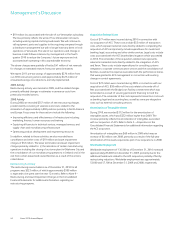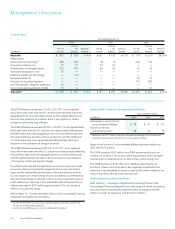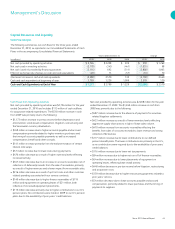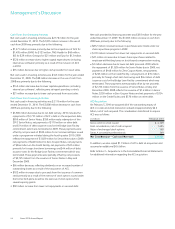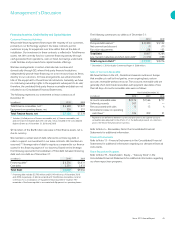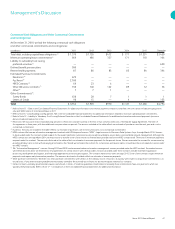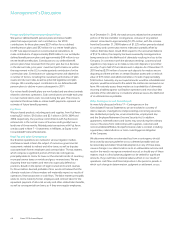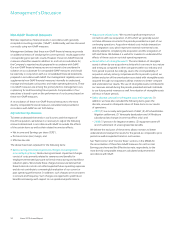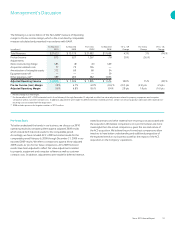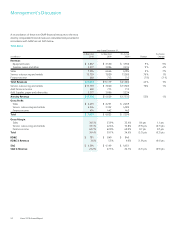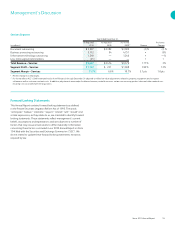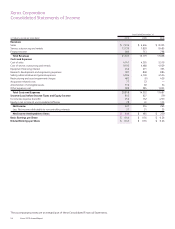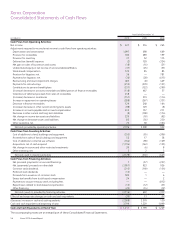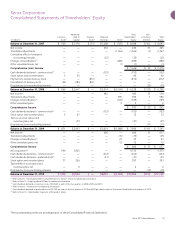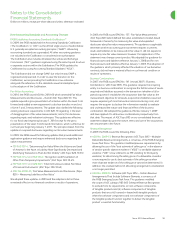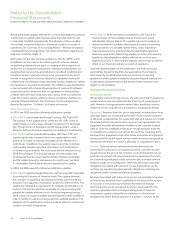Xerox 2010 Annual Report Download - page 52
Download and view the complete annual report
Please find page 52 of the 2010 Xerox annual report below. You can navigate through the pages in the report by either clicking on the pages listed below, or by using the keyword search tool below to find specific information within the annual report.50
Management’s Discussion
Xerox 2010 Annual Report
Acquisition-relatedcosts:
• We incurred significant expenses in
connection with our acquisition of ACS which we generally would
not have otherwise incurred in the periods presented as a part of our
continuing operations. Acquisition-related costs include transaction
and integration costs, which represent external incremental costs
directly related to completing the acquisition and the integration of
ACS and Xerox. We believe it is useful for investors to understand the
effects of these costs on our total operating expenses.
Amortizationofintangibleassets:
• The amortization of intangible
assets is driven by our acquisition activity which can vary in size, nature
and timing as compared to other companies within our industry and
from period to period. Accordingly, due to the incomparability of
acquisition activity among companies and from period to period, we
believe exclusion of the amortization associated with intangible assets
acquired through our acquisitions allows investors to better compare
and understand our results. The use of intangible assets contributed to
our revenues earned during the periods presented and will contribute
to our future period revenues as well. Amortization of intangible assets
will recur in future periods.
Otherdiscrete,unusualorinfrequentcostsandexpenses:
• In
addition, we have also excluded the following items given the
discrete, unusual or infrequent nature of these items on our results
of operations:
– 2 0 1 0 (1) loss on early extinguishment of debt; (2) ACS shareholders
litigation settlement; (3) Venezuela devaluation and (4) Medicare
subsidy tax law change (income tax effect only); and
– 2 0 0 8 (1) provision for litigation matters; (2) equipment write-off
and (3) settlement of unrecognized tax benefits.
We believe the exclusion of these items allows investors to better
understand and analyze the results for the period as compared to prior
periods as well as expected trends in our business.
See “Net Income” and “Income Taxes” sections in the MD&A for
the reconciliation of these Non-GAAP measures for net Income/
Earnings per share and the Effective tax rate, respectively, to the
most directly comparable measures calculated and presented in
accordance with GAAP.
Non-GAAP Financial Measures
We have reported our financial results in accordance with generally
accepted accounting principles (“GAAP”). Additionally, we have discussed
our results using non-GAAP measures.
Management believes that these non-GAAP financial measures provide
an additional means of analyzing the current periods’ results against the
corresponding prior periods’ results. However, these non-GAAP financial
measures should be viewed in addition to, and not as a substitute for,
the Company’s reported results prepared in accordance with GAAP.
Our non-GAAP financial measures are not meant to be considered in
isolation or as a substitute for comparable GAAP measures and should
be read only in conjunction with our consolidated financial statements
prepared in accordance with GAAP. Our management regularly uses our
supplemental non-GAAP financial measures internally to understand,
manage and evaluate our business and make operating decisions. These
non-GAAP measures are among the primary factors management uses
in planning for and forecasting future periods. Compensation of our
executives is based in part on the performance of our business based on
these non-GAAP measures.
A reconciliation of these non-GAAP financial measures to the most
directly comparable financial measures calculated and presented in
accordance with GAAP are set forth below.
Adjusted Earnings Measures
To better understand the trends in our business and the impact of
the ACS acquisition, we believe it is necessary to adjust the following
amounts determined in accordance with GAAP to exclude the effects
of the certain items as well as their related income tax effects:
Net income and Earnings per share (“EPS”),
•
Pre-tax income (loss) margin, and
•
Effective tax rate.
•
The above have been adjusted for the following items:
Restructuringandassetimpairmentcharges(includingthose
•
incurredbyFujiXerox): Restructuring and asset impairment charges
consist of costs primarily related to severance and benefits for
employees terminated pursuant to formal restructuring and workforce
reduction plans. We exclude these charges because we believe that
these historical costs do not reflect expected future operating expenses
and do not contribute to a meaningful evaluation of our current or
past operating performance. In addition, such charges are inconsistent
in amount and frequency. Such charges are expected to yield future
benefits and savings with respect to our operational performance.


